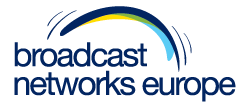In a meeting with Neelie Kroes, BNE shared its view on the future of the 700 MHz band and emphasized that Terrestrial Broadcasting is a spectacular success and key pillar for European content creation.
The European broadcast network operators association, Broadcast Networks Europe (BNE), has met European Commission vice president Neelie Kroes, who is in charge of the Digital Agenda for Europe, to share its views on the future of the 700 MHz Band and terrestrial broadcasting in the EU.
“We aim at an EU level political agreement on the long-term use of the 700 MHz band, which ensures a balance of stakeholders’ interests, maximises socio-economic benefits and promotes the Single Market”, said Kroes.
Lars Backlund, BNE´s Chairman, stressed that “DTT is a spectacular success. With its low cost and easy access it has become the most popular delivery platform for television. European consumers have embraced DTT and are investing in new receiving equipment. DTT networks now serve some 2000 TV channels and about 50% of European households with 275 million viewers, each spending some 4 hours watching linear TV every day. DTT is an essential part of the Audiovisual Ecosystem and a key pillar for European content creation”.
BNE also said that DTT should be fully recognized as a part of the Digital Agenda. Consumers and the Terrestrial Broadcast industry have made substantial investments to switch over from analog to DTT, allowing for the 800 MHz Digital Dividend. The broadcast network operators continue to invest to optimize network design and to efficiently utilize the spectrum available based on the GE06 plan for broadcast spectrum.
Both the Commission and BNE recognized that the 700 MHz context needs to be addressed. BNE pointed out that ITU decisions give options, i.e. co-primary status, but do not create obligations to Region 1 countries (Europe, Middle East and Africa). The situation in Europe is altogether different to that of African and Arab States that have no digital dividend in 800MHz band. Europe is therefore free to implement ITU options fully, partially or not at all, while the technical conditions to be decided at the next World Radio Communications Conference in 2015 will provide a common and harmonized framework for Region 1 countries looking for any changed use of the 700 MHz.
BNE underlined that frequency planning of DTT is quite a complex issue and re-farming would require a massive revision of the GE06 frequency plan with significant economic consequences for the broadcast industry as a whole (consumers, operators, television channels and content creators). A careful impact assessment of costs and benefits will be necessary before a final decision on the 700 MHz band.
Moreover, BNE pointed out that priority should be given to make full use of the availability of the 800 MHz in Europe, prior to consider clearing additional UHF spectrum.
BNE said that a clearance of the 700 MHz band, which represents 30% of current spectrum used by DTT, would be totally different from clearing the 800 MHz band. It would have a considerable impact, in a context where there would be no obvious consumer incentives to upgrade equipment. Also effective solutions to interference and compensation for migration and clearing costs have to be found.
The Terrestrial Broadcast industry needs long term certainty on spectrum access to be able to develop and innovate. Examples of new services are HD, 3D and Ultra High Definition TV. Further examples are market driven hybrid broadcast-broadband services available on connected TVs.
| For further information: | |
|
Lars Backlund Chairman BNE Email: lars.backlund@broadcast-networks.eu Mobile +46 708 742123
|
Bernard Pauchon Vice Chairman BNE E-mail: bernard.pauchon@broadcast-networks.eu Mobile +33 608 559755
|
